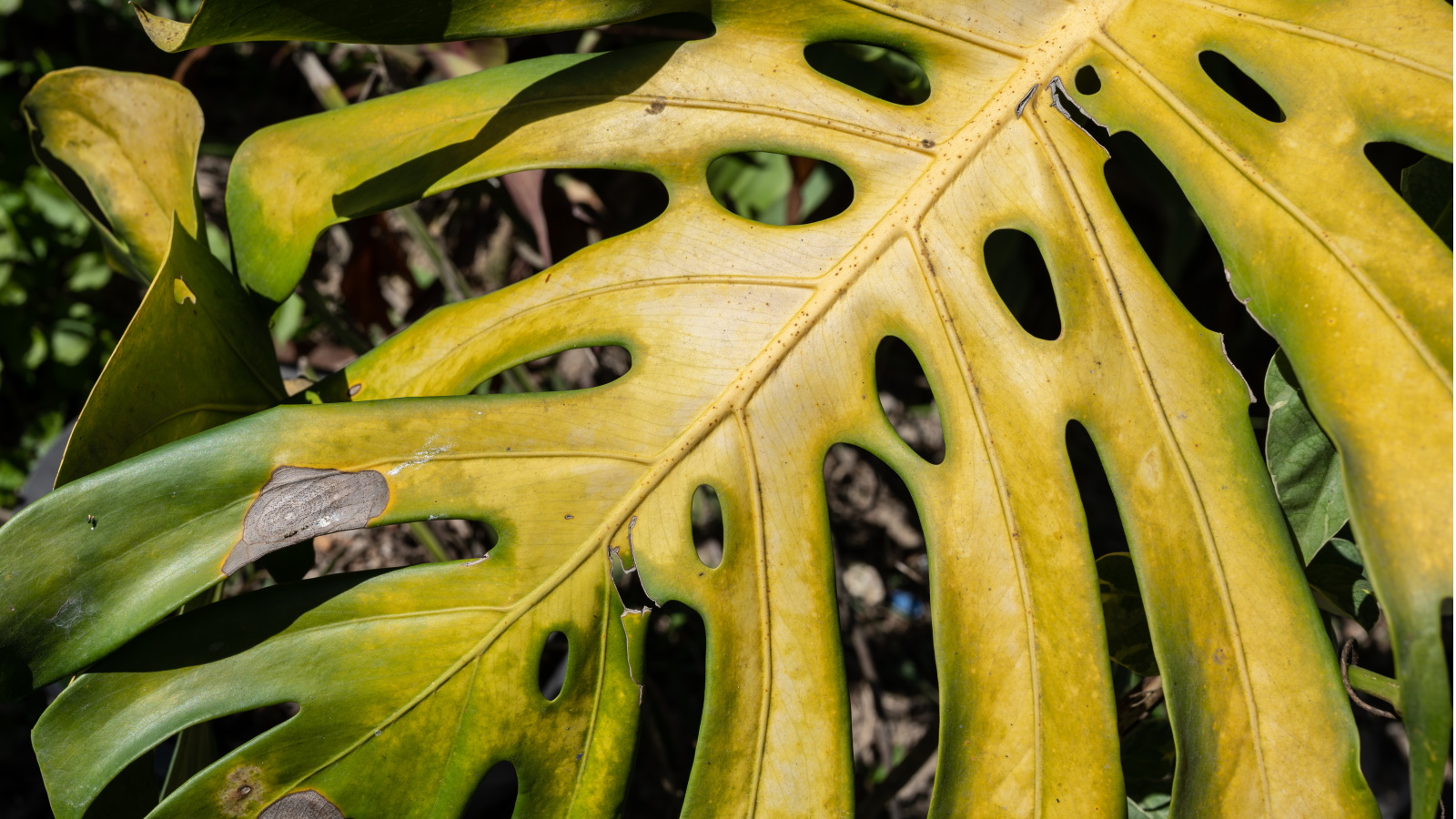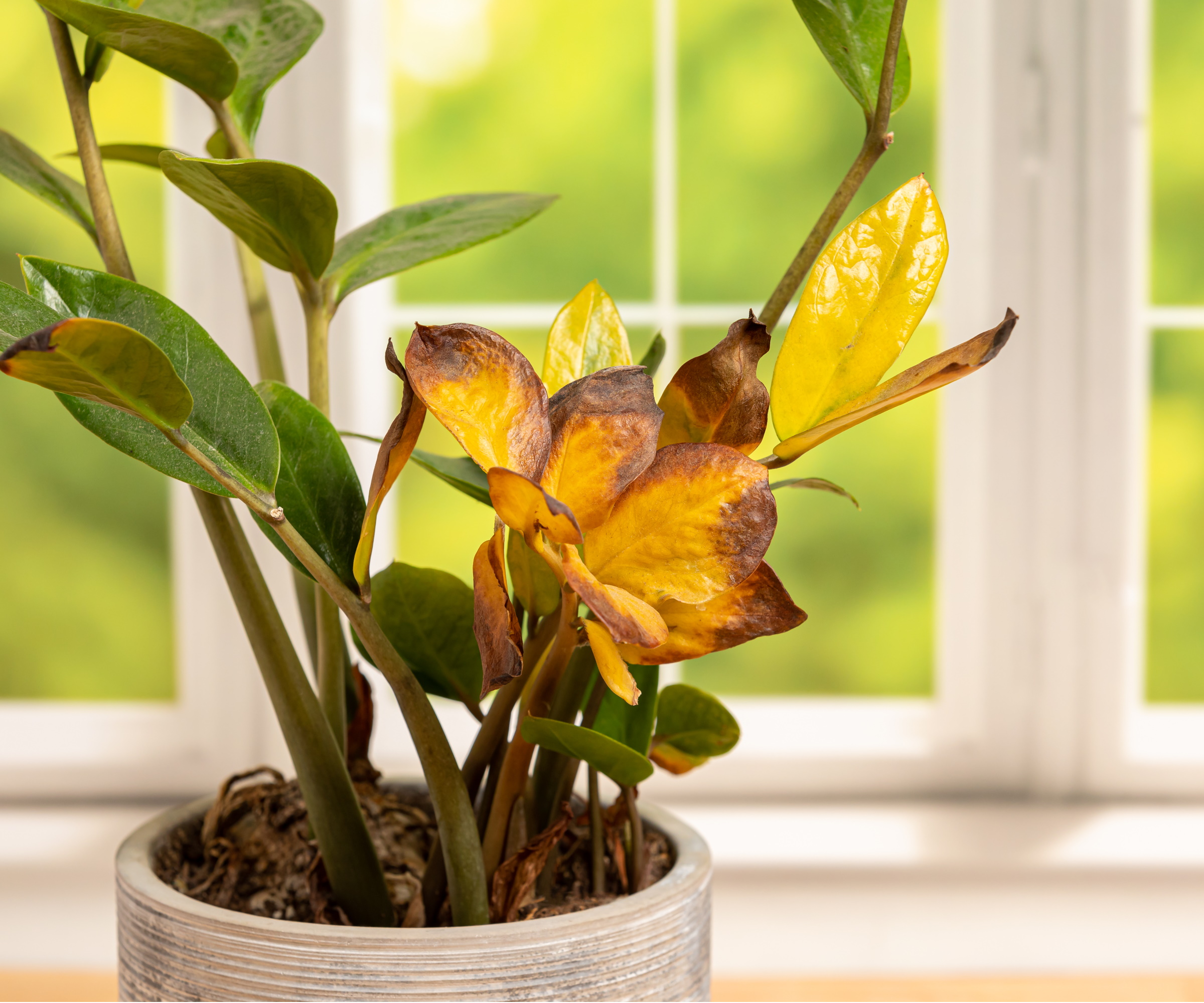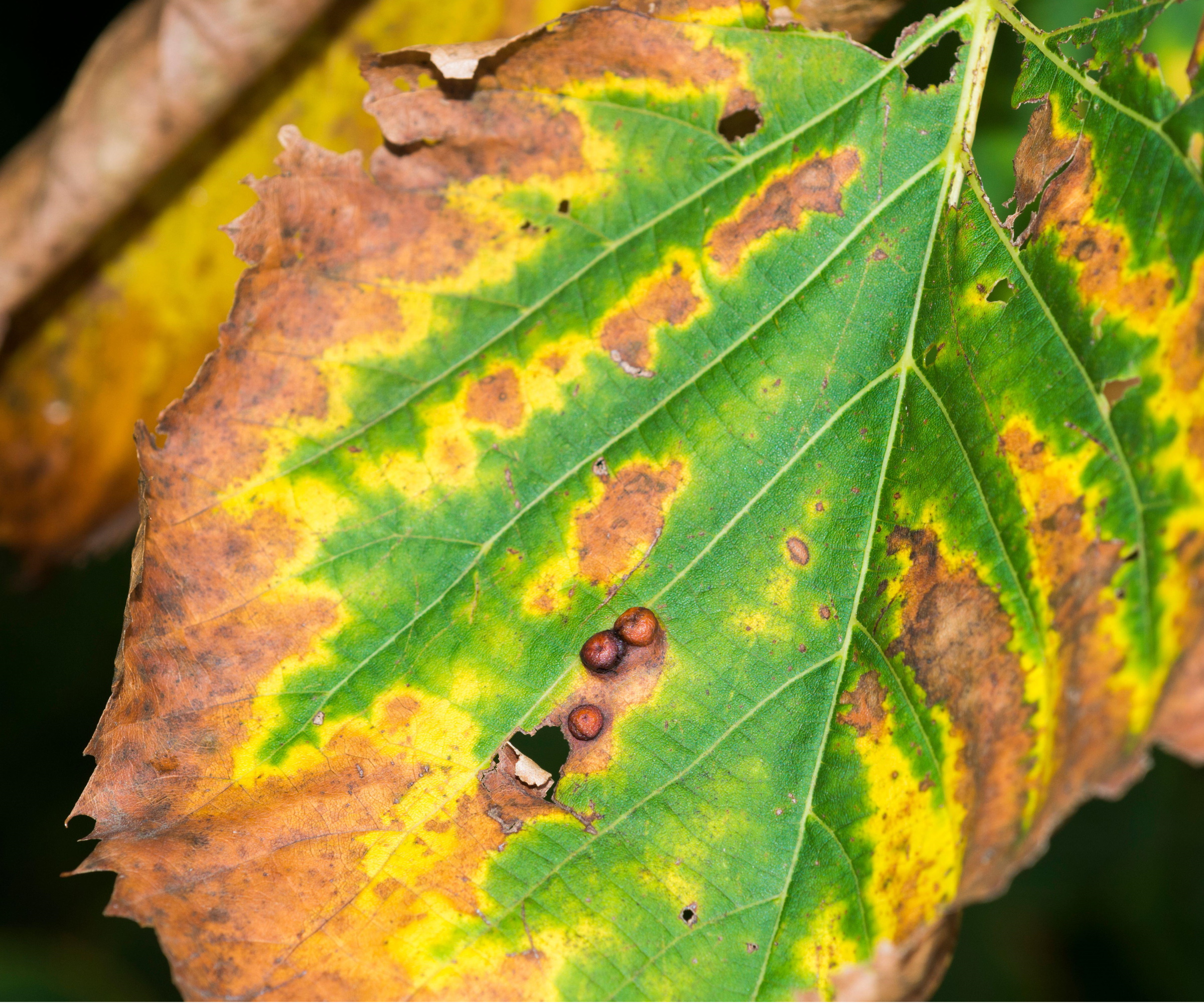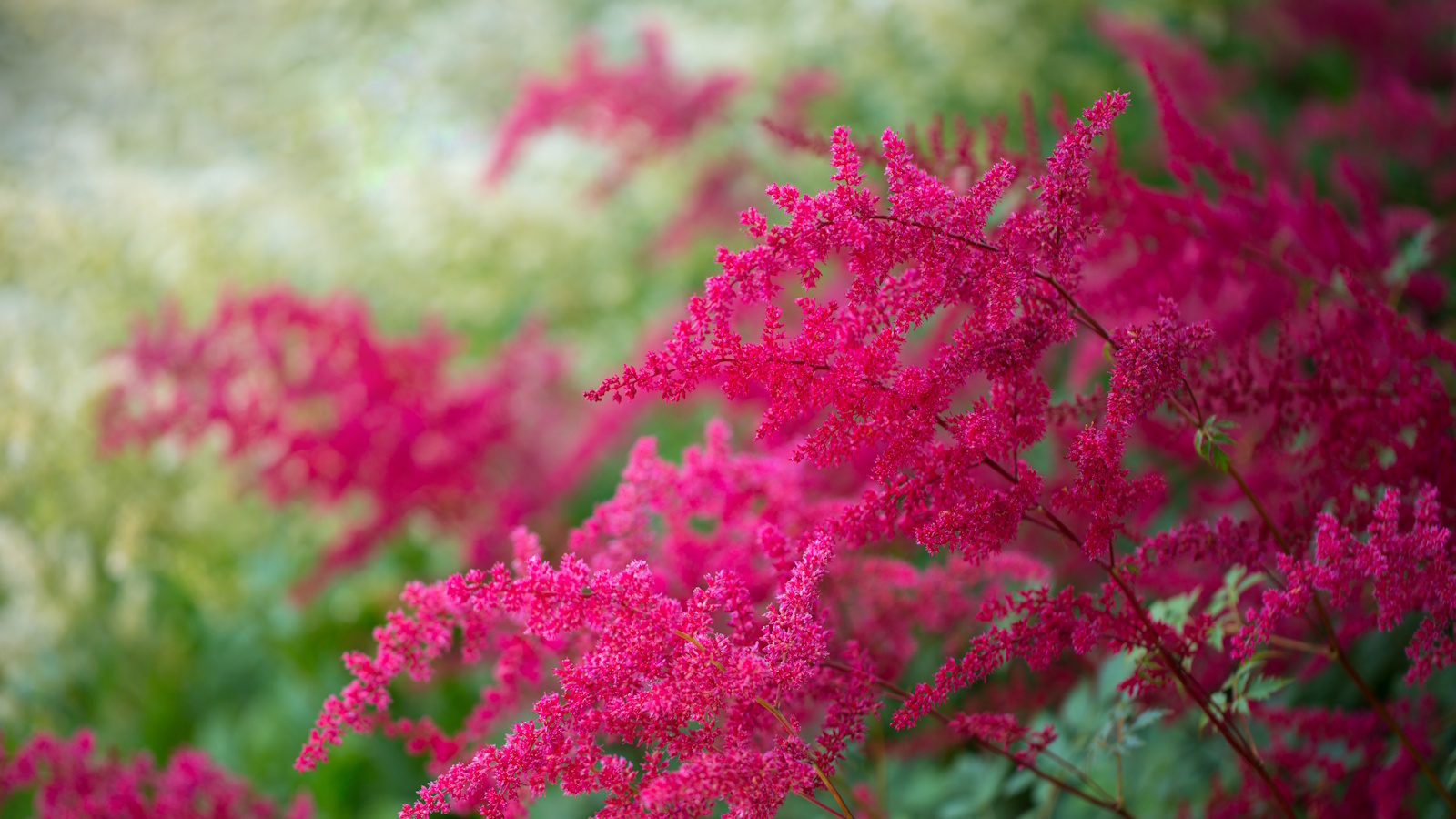What is leaf scorch and how to avoid it – experts reveal why your plant leaves look sunburned
Hot weather can make it challenging to keep plants happy, but there are a few things you can do to prevent damage from sun exposure


Have you ever considered your plants can get sunburned, just as we do? Leaf scorch is a common problem for gardeners and houseplant lovers during hot summers. At it's very basic meaning, it's exactly what it says on the tin - plant leaves being scorched by the sun.
As a keen plant parent with a large collection of indoor plants, I'm very familiar with the battle of keeping my houseplants happy during extreme temperatures. While it's always great to watch them bask in the sun, especially after gloomier winter and early spring days, I have had to take care to prevent my plants from sun damage.
If you're wondering why your monstera leaves are turning yellow, or perhaps your rose leaves are turning yellow in your yard, exposure to the sun might just be the explanation. Not sure if it is leaf scorch affecting your plants? Don't worry, I've spoken to experts to break down exactly what this looks like and how to avoid it happening to your garden and indoor plants.

What causes leaf scorch?

It really is as simple as it sounds - leaf scorch refers to scorched plant leaves. How do they get scorched? The most likely answer is from sun exposure, and it can happen to houseplants, shrubs, trees and flowering plants. It's a common problem gardeners face during the hottest point of the year.
'Leaf scorch is a term for sunburn on plant leaves. This happens most often when plants are moved from a shaded or indirect light spot into direct sun suddenly,' says Morgan McBride of the Keep Your Plants Alive blog. 'The direct sun will burn the leaves, leaving a crispy area that is either very light brown or white with brown crispy edges,' she explains.
But it isn't just a case of too much sunlight that can cause leaf scorch, as a combination of environmental factors can result in the appearance of burned foliage.
'It happens when plants lose water faster than they can replace it, leaving their leaves looking like they've been at the wrong end of a flamethrower,' says Ben McInerney, an arborist and landscape gardener.
Not only does leaf scorch impact the appearance of your plants, but it can also affect their health. Foliage plays an important role in photosynthesis for plants, and having damaged leaves impacts their ability to carry out this process. As a result, plants may find it hard to produce new growth and maintain the health of existing leaves.

Morgan is a houseplant blogger at Keep Your Plants Alive. Having grown up surrounding by houseplants in her family home and now owning her own collection, she writes about all things houseplant care and offers advice on growing indoors.

Ben McInerney is a qualified arborist with over 20 years of industry experience running a commercial lawn mowing and tree services business. He is the founder of GoTreeQuotes, a website that specialises in helping property owners find the best deals on tree removal and trimming.
How to avoid leaf scorch

If you're like me and the prospect of any of your precious plants turning brown, yellow and crispy horrifies you, the good news is that you can take a few precautionary measures to prevent leaf scorch.
The first thing to do is identify which of your plants are most susceptible to leaf scorch. 'Leaf scorch is most likely to happen to indoor plants that have been moved into the direct sun, or outdoor plants that are suited for shady environments that are planted or find themselves in the direct path of hot sun,' says Morgan.
One of the biggest common indoor plant mistakes is not providing the right light levels for your specific plant's needs. While it's true that there are plenty of indoor plants for direct sun, others will not cope well with lots of exposure to the sun. Likewise, there are plenty of shade plants that won't mind a bright spot in your yard, but too much sunlight may cause their sensitive leaves to burn.
It really is as simple as not placing these plants in a particularly sunny position. 'Beware of south-facing windows where direct sun can expose your plants to the direct rays. Consider adding a gauzy curtain, available at Walmart, to filter the light, or just move the plant a bit away from the window,' suggests Morgan.
If you have a south-facing garden or south-facing balcony, consider adding garden shade in areas where you have plants that are more sensitive to direct sunlight. This is where things like installing a pergola, like this pergola from Amazon, can be useful or even planting tall trees to cast shade over shrubs and plants growing lower to the ground.
'Another way to avoid leaf scorch is by watering deeply and less frequently. It's like teaching your plants to be camels - they'll thank you for it,' advises Ben. This method can be applied to both houseplants and garden plants, and it means that they won't become dehydrated during extreme heat, allowing them to stay healthy.
Take care not to overwater your plants, however, as waterlogged soil can lead to alternative problems like houseplant root rot. Too much water may likewise leave your plants turning yellow and drooping - that's why I like to use this soil moisture meter from Amazon to identify when it's time to water my plants.
FAQs
How do you revive plants from leaf scorch?
If your plants become dehydrated and are exposed to lots of direct sunlight, it could leave them looking scorched. While there's no way to turn those crispy, yellow and brown leaves green again, it is possible to return your plant to health.
'You can trim the burnt bit of the leaf off with scissors. If the leaf is more than 50% scorched, I prefer to remove it entirely,' says Morgan McBride of the Keep Your Plants Alive blog.
Always use essential gardening tools to make sharp cuts, like pruning scissors, and clean your gardening tools after use to prevent the spread of pests and diseases. You should then provide optimal care for your plant to encourage it to bounce back and produce new growth.
Do wet leaves burn in the sun?
A common misconception is that wet foliage will burn under extreme heat. While you might assume water heating up from high temperatures can scorch leaves, this is unlikely to happen. However, your plant can start to appear scorched and burned if it is dehydrated. That's why it's important to water your plants deeply during hot weather to keep moisture levels up.
Although it can impact the appearance of your plants, leaf scorch doesn't harm their health in the long term - so long as you remove any damaged leaves. Putting precautions in place to protect your plants from leaf scorch can keep them looking their best through the summer season.
If you're planning your watering schedule for the hotter months, you might also want to read up on whether watering grass in the sun burns it.
Sign up to the Homes & Gardens newsletter
Design expertise in your inbox – from inspiring decorating ideas and beautiful celebrity homes to practical gardening advice and shopping round-ups.

Tenielle is a Gardens News Writer at Homes & Gardens. She holds a qualification in MA Magazine Journalism and has over six years of journalistic experience. Before coming to Homes & Gardens, Tenielle was in the editorial department at the Royal Horticultural Society and worked on The Garden magazine. As our in-house houseplant expert, Tenielle writes on a range of solutions to houseplant problems, as well as other 'how to' guides, inspiring garden projects, and the latest gardening news. When she isn't writing, Tenielle can be found propagating her ever-growing collection of indoor plants, helping others overcome common houseplant pests and diseases, volunteering at a local gardening club, and attending gardening workshops, like a composting masterclass.
-
 5 surprising but brilliant ways to clean with old socks – from perfectly buffing stainless steel to deterring pests naturally and more
5 surprising but brilliant ways to clean with old socks – from perfectly buffing stainless steel to deterring pests naturally and moreTackle dust in tricky corners, clean your mirrors and even banish bad odors with those rogue single socks
By Andy van Terheyden Published
-
 How to grow astilbe – expert advice on cultivating this shade-tolerant flowering perennial
How to grow astilbe – expert advice on cultivating this shade-tolerant flowering perennialShade-tolerant and pest-resistant - astilbe are hardy and tough perennials that can thrive in many settings
By Ellen Wells Published